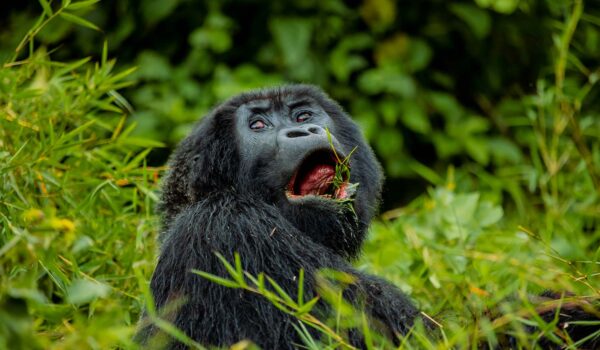Tanzania’s Climate and Weather
Tanzania’s weather and climate are as diverse as its scenery, owing to its tropical position, varying heights, and closeness to the Indian Ocean. The nation has a tropical climate with distinct wet and dry seasons, although geographical variances provide distinctive microclimates. Understanding these weather patterns may help tourists prepare for a pleasant and successful trip, especially considering the country’s many natural wonders such as the Serengeti, Kilimanjaro, and Zanzibar.
Seasonal variations
Tanzania’s climate has two distinct seasons: wet and dry. Because of its proximity to the equator, the nation lacks the usual four seasons of winter, spring, summer, and fall. Instead, its two wet seasons result in beautiful scenery, while the drier seasons are ideal for wildlife watching.
The Long Rains (Masika)—March to May
The lengthy rains fall between March and May, with heavy yet short daily rainfall. Humidity is high, and the environment becomes verdant and vivid as flora thrives. Although the muddy roads and rough travel conditions make this season unsuitable for safaris, it does provide lush landscape and fewer people. This season has varying effects on various places; for example, coastal areas get more rainfall owing to moist air from the Indian Ocean.
The Dry Season: June to October
Tanzania’s lengthy dry season lasts from June to October, with colder temperatures and little rain. This is the most popular time for tourism, particularly wildlife safaris. As water supplies dry up, animals concentrate along rivers and watering holes, making them easier to identify. Temperatures remain reasonable, with warm days and chilly nights, particularly in high areas like the Serengeti and Ngorongoro Crater. This season also has bright sky and good visibility, making it suitable for outdoor activities such as hiking Mount Kilimanjaro.
The Short Rains – November-December
November and December deliver a shorter and less severe rainy season. While the rains are not as strong as the Masika rains, they do renew the plants and provide a gorgeous, green scene. The brief showers are intermittent, with bright periods in between, allowing for a variety of activities. Wildlife viewing remains excellent throughout this season, as animals spread out over the plains and begin their migratory patterns. The lower weather and fewer people make this an ideal time to explore the Northern Circuit parks, including Tarangire and Lake Manyara.
The Hot, Humid Season – January to February
After the brief rains, Tanzania endures a hot and humid spell from January to February. This season delivers dry, warm weather, particularly in the north and along the shore. It is a great time to see the Great Migration in the Serengeti, when enormous herds of wildebeest, zebras, and antelope begin their journey over the plains. The southern and western parts are also less humid at this season, making it ideal for people looking for a warmer climate.
Regional Climate Differences
Altitude, closeness to the water, and geographical characteristics all have an impact on Tanzania’s regional climates.
Coastal and Island Areas
The coastal regions, including Zanzibar and Dar es Salaam, have a tropical climate with high humidity and temperatures ranging from 25°C to 30°C (77°F to 86°F) year-round. Coastal locations get greater rainfall throughout the lengthy rainy season, particularly from March to May, since they are more vulnerable to monsoon winds. This area also has a wonderful sea wind that gives some respite from the humidity.
Northern and Central Highlands
The Northern Circuit, which encompasses the Serengeti, Ngorongoro Crater, and Mount Kilimanjaro, benefits from lower temperatures because to its greater elevation. These places have moderate temperatures, with daily highs ranging from 20°C to 25°C (68°F to 77°F) in the dry season. Nights may be frigid, particularly in the Ngorongoro Highlands and on Kilimanjaro’s slope. The highlands have a drier climate, yet they still get brief, strong rains throughout the rainy season.
Western and Southern Regions
The western and southern areas, which are home to less-visited parks like as Katavi, Selous, and Ruaha, have a similar tropical climate but a more evident wet season, making roads and trails difficult to manage. The dry season, which runs from June to October, is more accessible and suitable for game watching. Temperatures in these areas may exceed 30°C (86°F) during the dry season, although nights bring cooler air.
Mount Kilimanjaro and Meru
The mountainous areas of Kilimanjaro and Meru have their unique microclimates. As height rises, temperatures fall, resulting in snow on Kilimanjaro’s peak despite its tropical latitude. Climbers often confront pleasant weather at the mountain’s foot but chilly, thin air at higher altitudes, with nighttime temperatures dropping to sub-zero levels. The optimum time to climb is during the dry season (June to October and January to February), when conditions are ideal.
Influence on Wildlife and Tourism
Tanzania’s climate not only defines the country’s natural beauty, but also has a significant impact on animal patterns, notably the Great Migration in the Serengeti. This migration, fueled by periodic rains and grass growth, is one of the world’s most spectacular animal phenomena. The date and location of the migration change year to year, depending on rainfall, although it typically peaks during the dry season from July to October, bringing people from all over the globe.
Climate Change and Future Implications
Tanzania’s climate is being more impacted by global climate change, resulting in unpredictable weather patterns. Changes in rainfall timing and intensity have an influence on local agriculture, water supply, and biodiversity, impacting both humans and animals. Temperature increases also effects glacier retreat on Mount Kilimanjaro, which might jeopardize one of the country’s most famous vistas.
Tanzania’s climate is a patchwork of weather patterns that provide both problems and opportunities, influencing its distinct natural environment and animal behavior. From the lush rain-soaked plains to the sunbaked savannahs, each season provides a unique perspective on the country’s splendor. Understanding these patterns allows tourists to appreciate Tanzania’s natural rhythms while also planning a journey that best suits their interests, such as following the Great Migration, climbing Kilimanjaro, or relaxing on Zanzibar’s sunny beaches.

